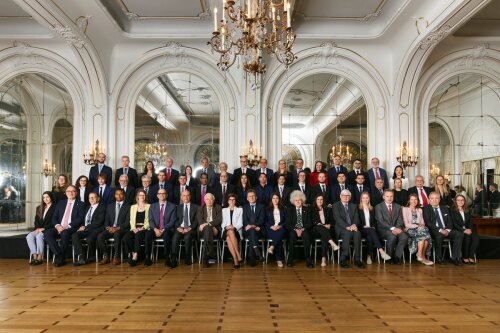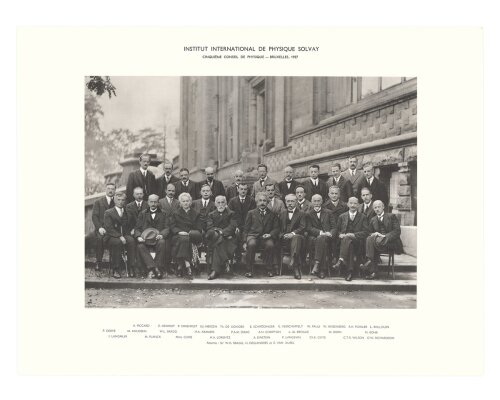Scientists and students from all over Europe underline the importance of chemistry with remake of iconic Solvay conference photo.

34 professors and top scientists in chemistry, including two Nobel Prize winners and three Belgians, and 21 promising PhD students from all over Europe, have remade the iconic photo from the 1927 Solvay conference at the Hotel Metropole in Brussels. Marie Curie and Albert Einstein, among others, illustrates the scientific leadership of the time and the central role that Belgium played in it. The revival of the photo is part of the 50th anniversary of the European chemical federation Cefic and is a tribute to the innovative power of chemistry and science.
Scientific progress has always been the driving force in the permanent pursuit of a higher quality of life, better health care and optimal protection of the environment. Scientific research, coupled with industrial expertise, will also be instrumental in tackling the challenges of the future and contributing to the ambitions of the European Green Deal. To strengthen this alliance between science and business, the European chemistry federation Cefic brought together professors and students from all over Europe to enter into a dialogue with each other and with 25 CEOs and Chief Technology Officers (CTOs) of Europe's largest chemical companies.
Among them are two Nobel Prize winners – the Dutchman Ben Feringa (University of Groningen) and the Frenchman Jean-Marie Lehn (Université de Strasbourg) – and three Belgian professors: Annemie Bogaerts (UAntwerp), Kevin van Geem (UGent) and Steven De Feyter (KU Leuven). ). The scientists present were selected on the basis of their research and scientific publications related to chemistry.
Each European country was also allowed to send a promising student. For Belgium, Roy Aerts, master in Chemistry and doctoral student at the University of Antwerp, took part. He was nominated after a selection procedure by KVCV (Royal Flemish Chemical Association) and essenscia, the Belgian federation of chemistry and life sciences.
Roy Aerts, PhD student in the chemistry department of the University of Antwerp: “I continue to find it fascinating how we, as chemists, can investigate the world at the molecular level, even if we cannot experience it directly that way. Even more impressive is that we can very accurately analyze, manipulate and predict the behavior of molecules in order to improve our quality of life. Imagination and intuition play a crucial role in this. Combine this with a mindset that anything is possible, and I am confident that chemistry will find creative solutions to the major societal challenges we face.”
dr. Martin Brudermüller, Chairman of Cefic and CEO of BASF: “I am delighted to be surrounded today by extremely talented young researchers and the world's best chemists. The young generation will determine the future of chemical innovation in Europe and with it the success of the European Green Deal. Innovation is in our blood: the European chemical industry is the world's second largest investor in chemical research and innovation, with more than €9 billion going to research each year. It is therefore very important for the future of Europe to keep in touch with the current and the next generation of scientists.”
Yves Verschueren, essenscia managing director and chairman of the National Associations Board at Cefic. “Our country has a strong tradition of scientists and entrepreneurs in chemistry, plastics and pharmaceuticals. Just think of Ernest Solvay, Lieven Gevaert, Leo Baekeland or Paul Janssen. Even today, the chemical and pharmaceutical industry in Belgium is one of the absolute best in the world. This is precisely because of the innovation-driven collaboration between companies, universities and research centres. We need to build on that historical legacy and our high-tech industry so that scientific breakthroughs find their way more quickly to industrial applications that set us on the path to a sustainable future.”

The Solvay conferences, first organized in 1911 by the Belgian entrepreneur Ernest Solvay, are regarded as benchmarks in science. The conferences, which were held in Brussels, focused on the most important issues in both physics and chemistry. Perhaps the most famous conference was the fifth, in October 1927, where the world's foremost physicists gathered to discuss newly formulated quantum theory. Among them celebrities such as Niels Bohr, Marie Curie, Albert Einstein and Max Planck. No fewer than 17 of the 29 attendees were Nobel laureates or would become so later.